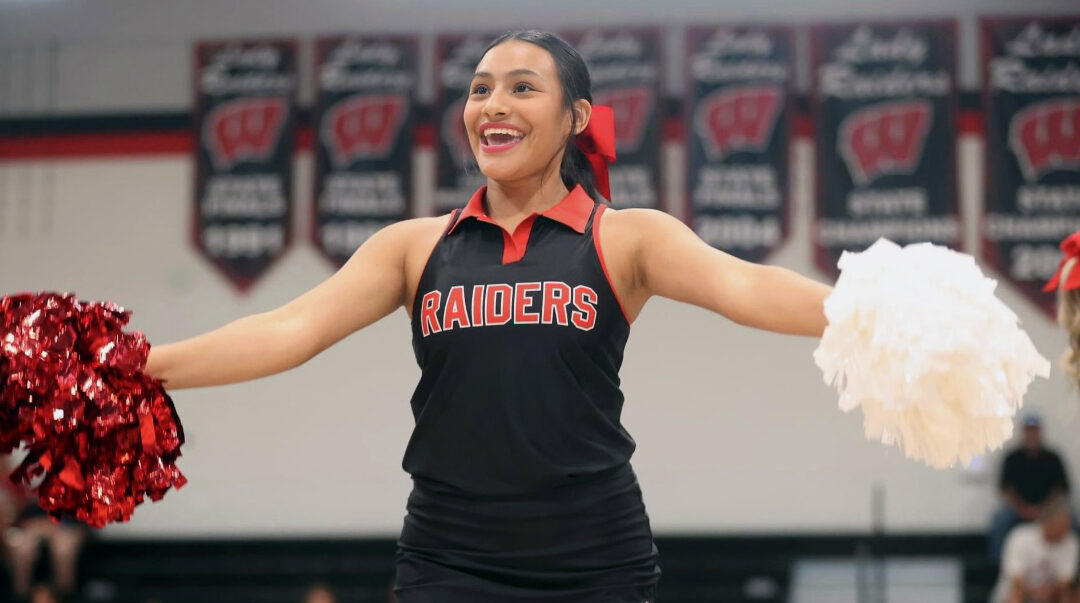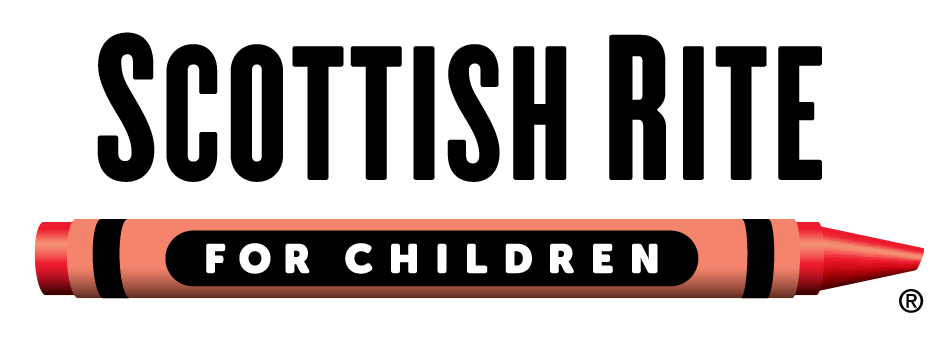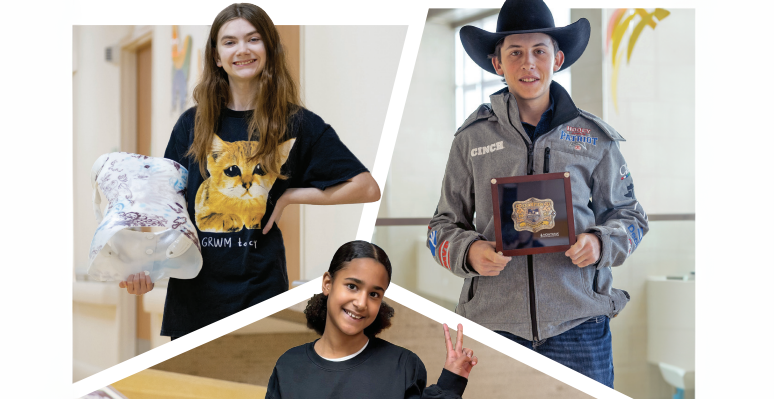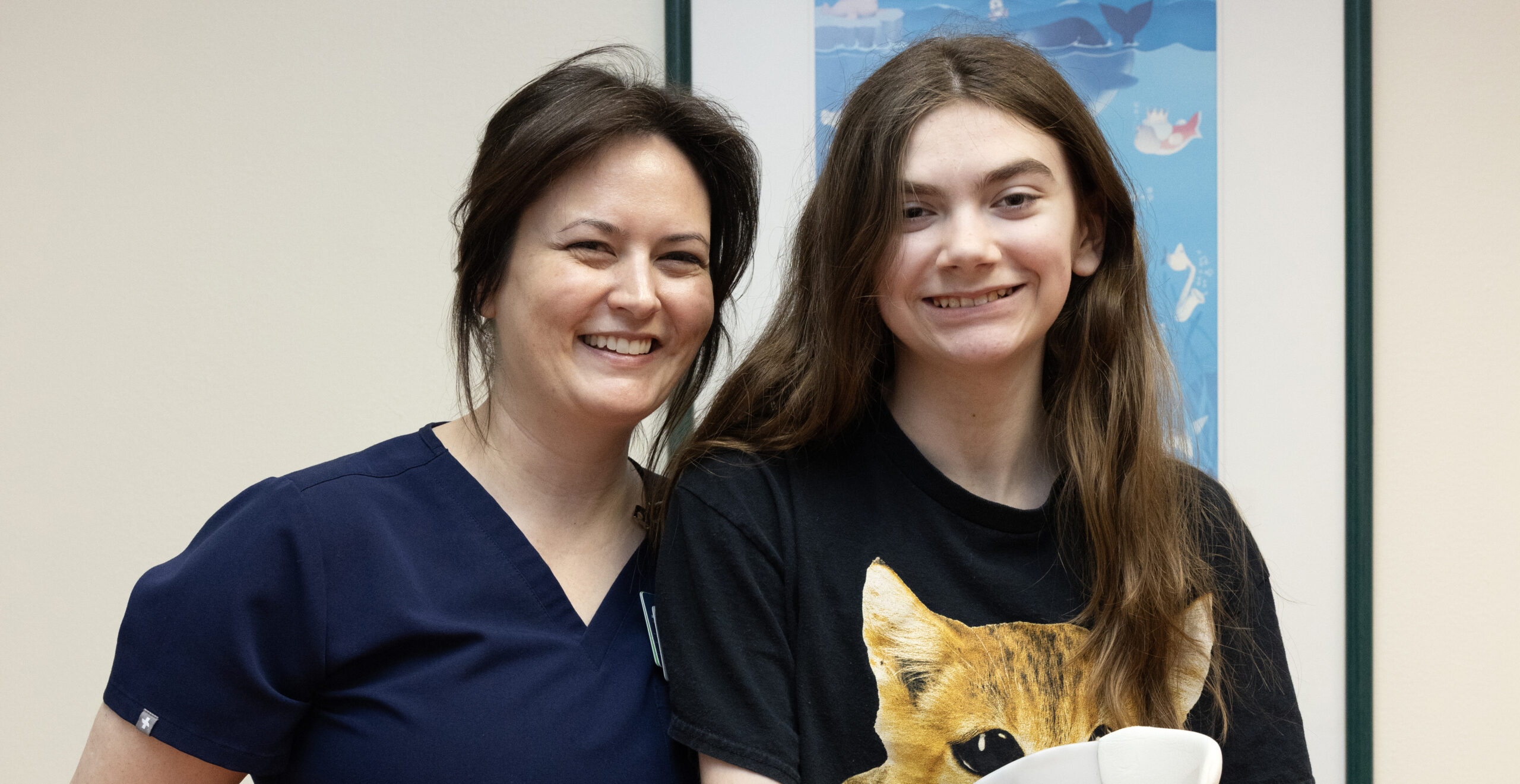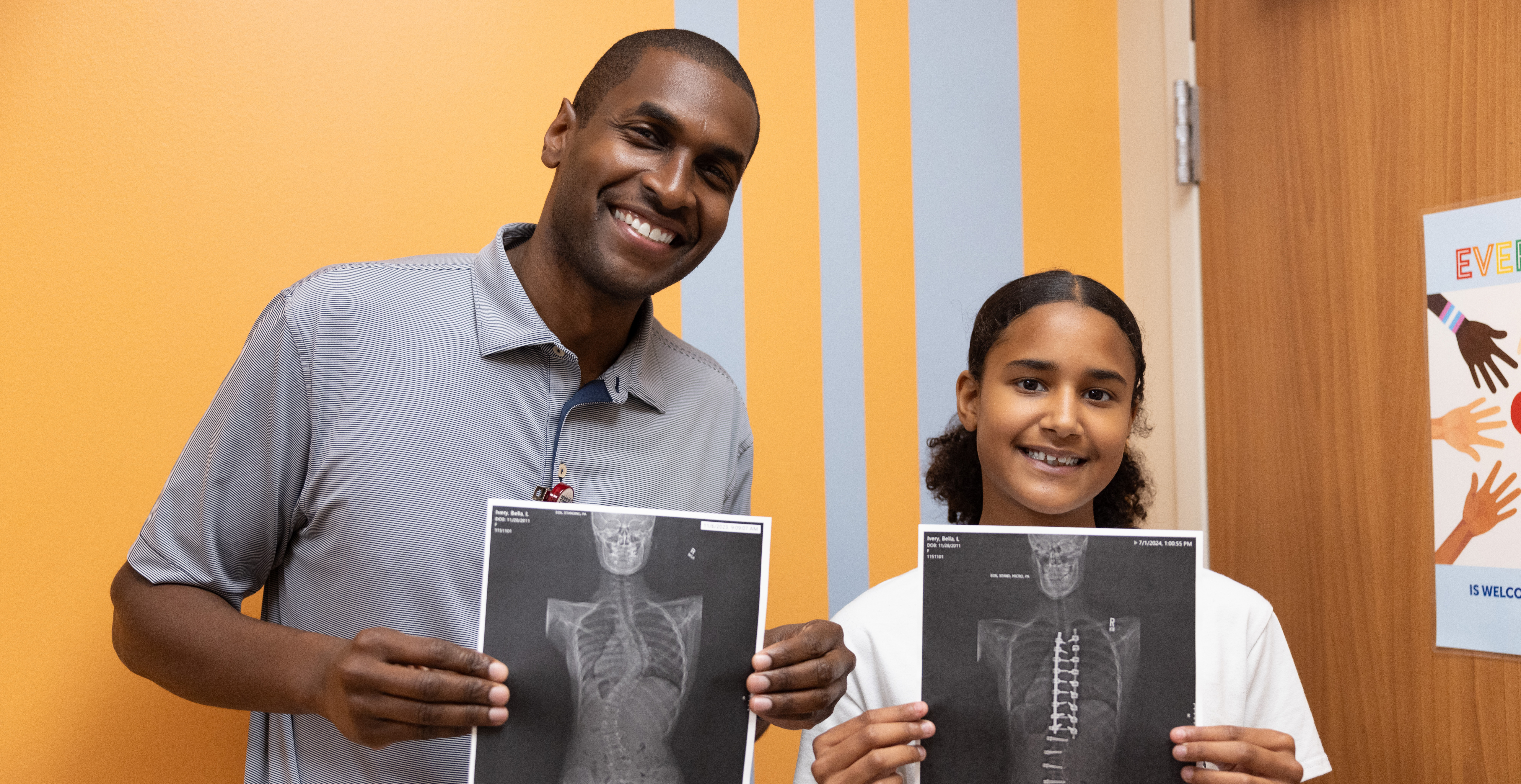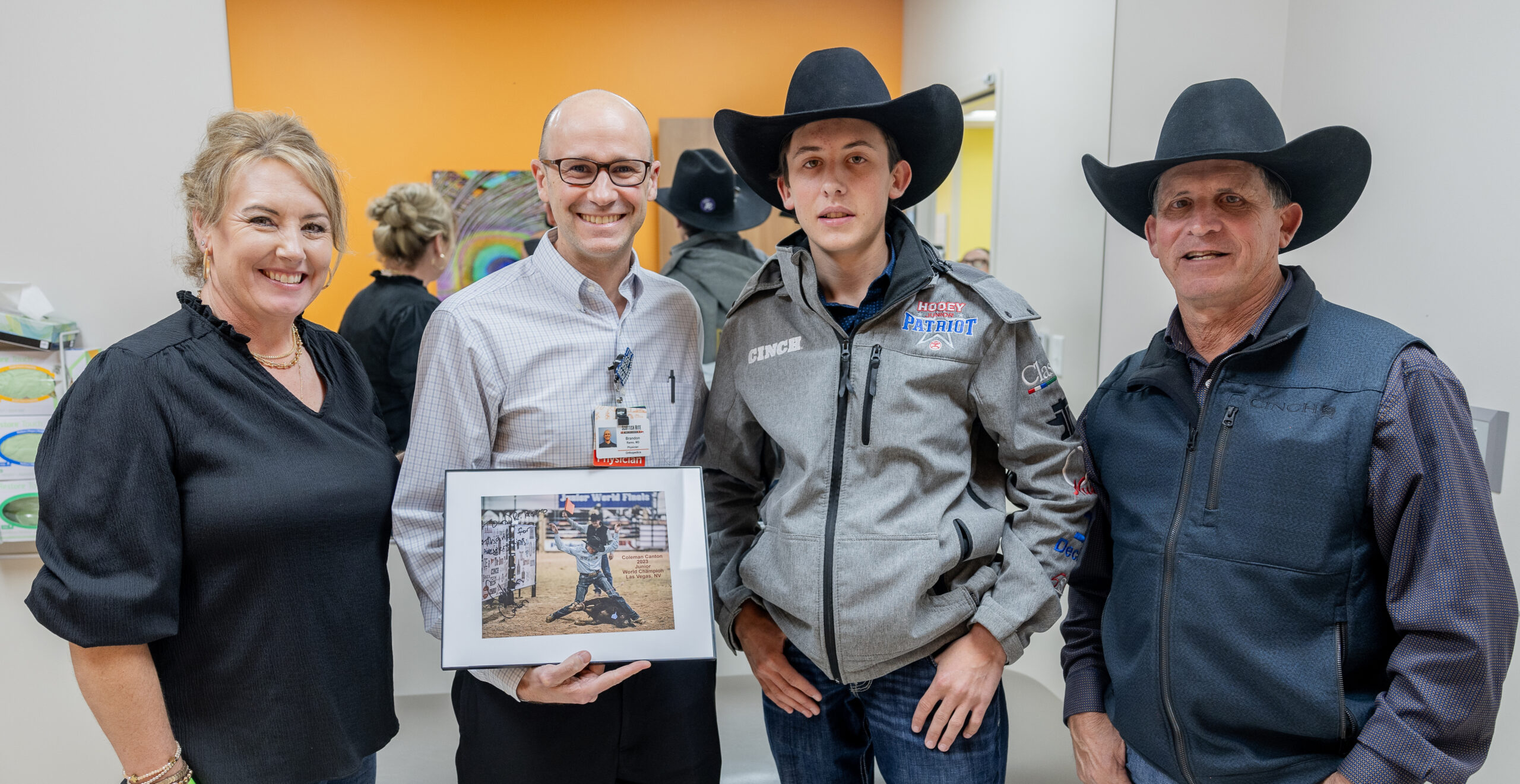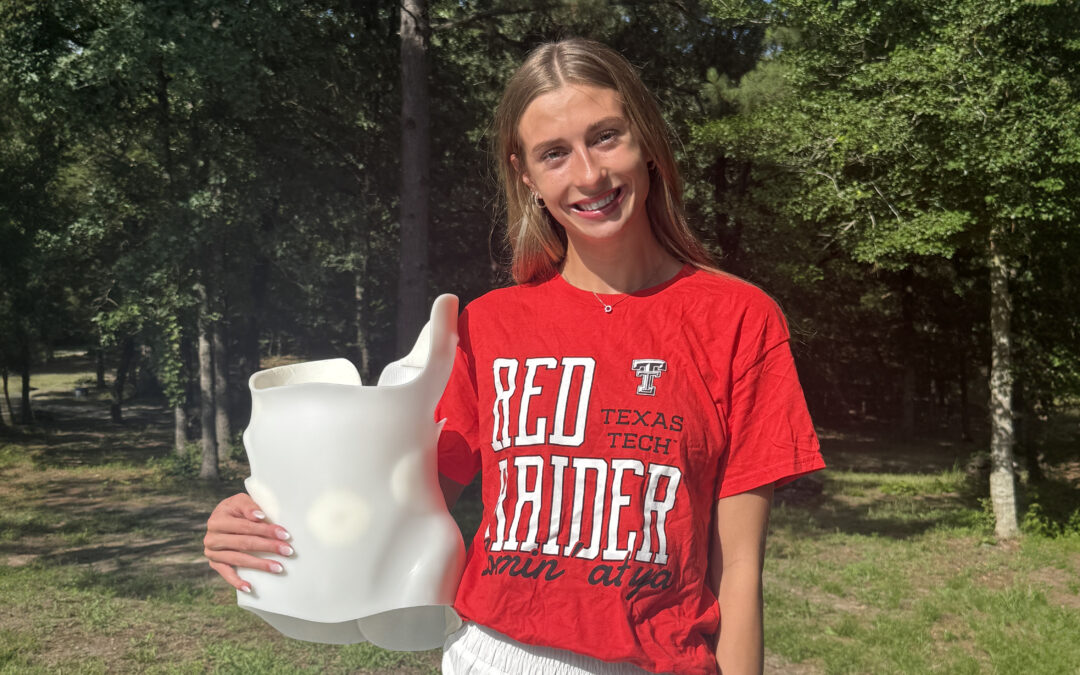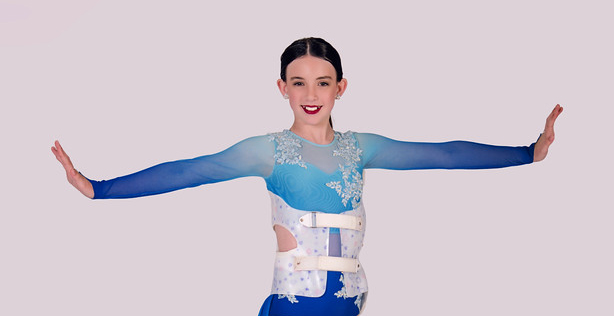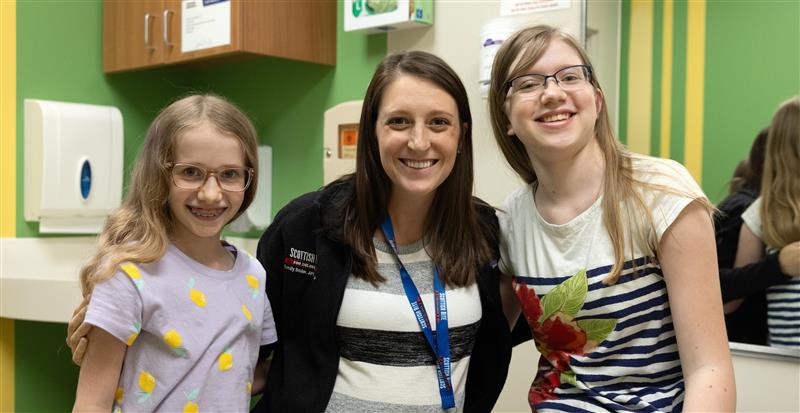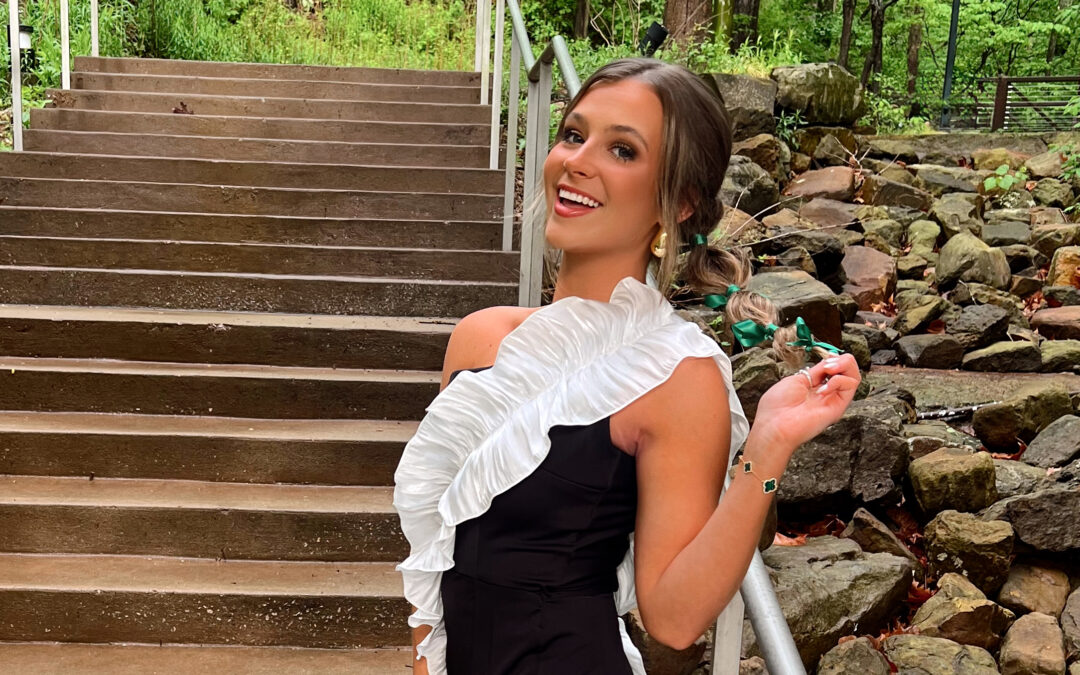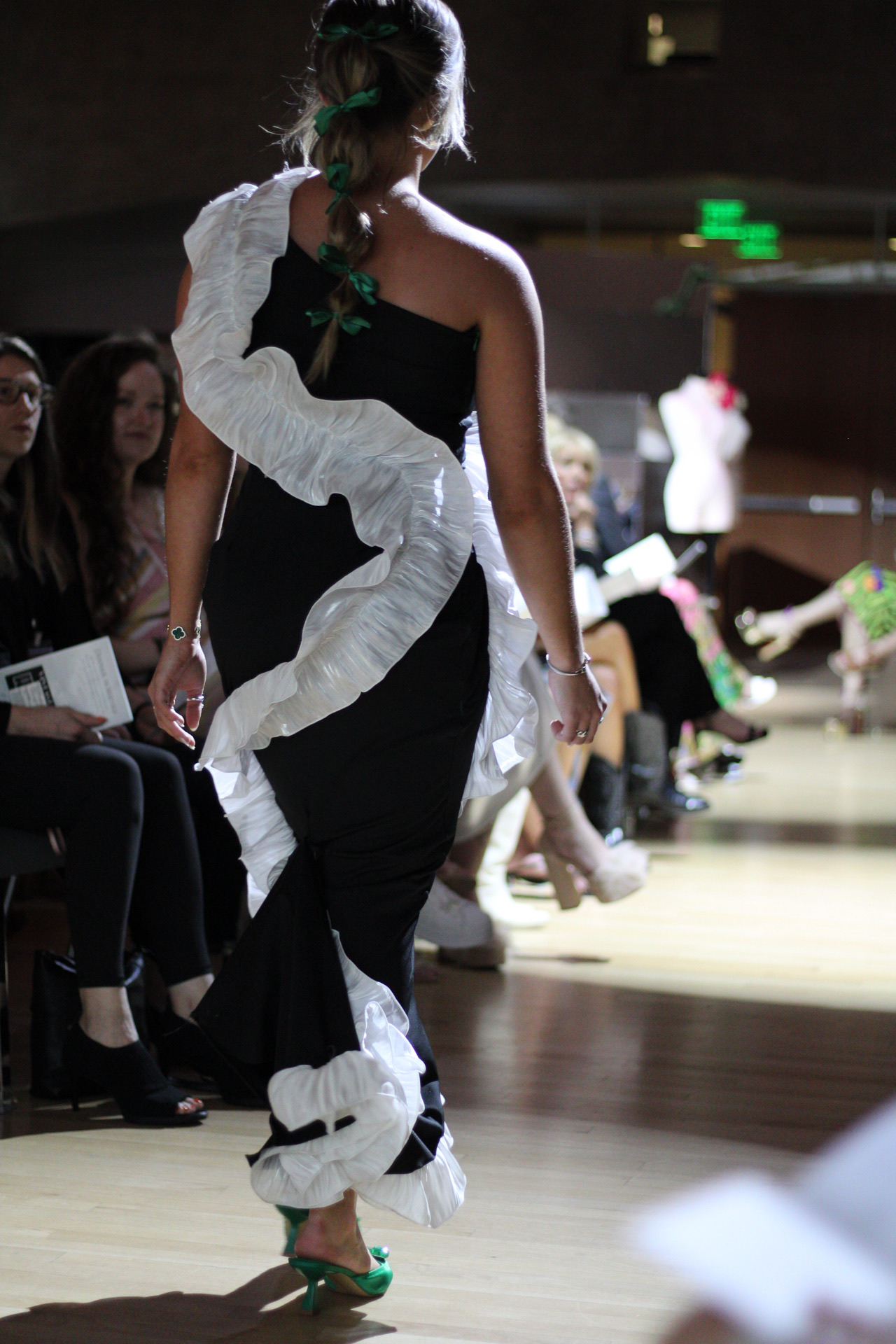With an insatiable love for reading, 13-year-old Ellie and 10-year-old Josie, of McGregor, Texas, have always turned the page of their story together, even as they face scoliosis side by side. Their mother, Sarah, recognized the signs early as she was diagnosed with scoliosis herself as a teenager.
“I always knew it could be a possibility for my kids,” Sarah says. “I noticed that both girls began to develop curves that were apparent even to an untrained eye, so we started to look for options.”
Ellie, Josie and their family came to Scottish Rite for Children where they receive treatment from Megan E. Johnson, M.D. — medical director of Ambulatory Care, pediatric orthopedic surgeon and program director of the Dorothy & Bryant Edwards Fellowship in Pediatric Orthopedics and Scoliosis. During their first evaluation, Dr. Johnson discovered that both girls have idiopathic scoliosis, the most common type of scoliosis with no known cause.
While Ellie and Josie share a similar diagnosis, no two spine curves are the same. Ellie has adolescent idiopathic scoliosis (AIS), which primarily affects children and teens between the ages of 10 to 18. In her case, she has two curves — a 30-degree thoracolumbar curve, where the upper and lower parts of the spine meet, and a 21-degree thoracic, or middle back, curve. Josie has juvenile idiopathic scoliosis, which affects children between the ages of 4 to 10. In her case, she has a 33-degree thoracic curve.
To treat both girls, Dr. Johnson recommended bracing. Bracing is typically used for curves measuring between 20 and 45 degrees. It is prescribed to prevent curves from worsening. For Ellie and Josie, Dr. Johnson instructed them to wear their scoliosis braces for 18 to 20 hours a day.
“I knew one scoliosis brace could be expensive,” Sarah says. “However, two? Could we really afford that?” To make Ellie’s and Josie’s braces more affordable, their family enrolled in Scottish Rite’s Crayon Care program. Crayon Care is a charity care program that provides financial assistance to families receiving treatment at Scottish Rite. “Scottish Rite’s Crayon Care has been such a blessing to us,” Sarah says. “We know we are getting the best care for Ellie and Josie.”
Scottish Rite’s in-house Orthotics and Prosthetics department created custom braces for Ellie and Josie for same-day fittings at their appointments. Additionally, their care team consists of certified pediatric nurse practitioner Emily Chapman, APRN, CPNP-PC, and Director of Orthotics Don Virostek, C.P.O., L.P.O. Virostek creates and fits Ellie’s and Josie’s braces while Chapman monitors their spine curves for any growth.
While bracing started as simply a treatment plan, it kick-started a friendly competition between the sisters. All Scottish Rite for Children braces include a small temperature-sensitive device that tracks how long a child wears their brace and their progression.
“Ellie and Josie get really competitive about wearing their braces,” Sarah says. “We always look forward to seeing who wore their braces longer when we visit Scottish Rite.”
Recently, the girls returned to Scottish Rite for a visit with their three younger sisters. During their appointment, they discovered the winner of their brace-wearing contest. By a difference of only one hour, Ellie wore her brace longer. Although their story is still being written, Ellie and Josie continue to support each other through every chapter.
“We are thankful to see the improvements in their spines,” Sarah says. “I’ve recommended Scottish Rite to other parents because of the level of care. We are so thankful that Scottish Rite is relatively close by and feel great, knowing we have this wonderful resource.”
